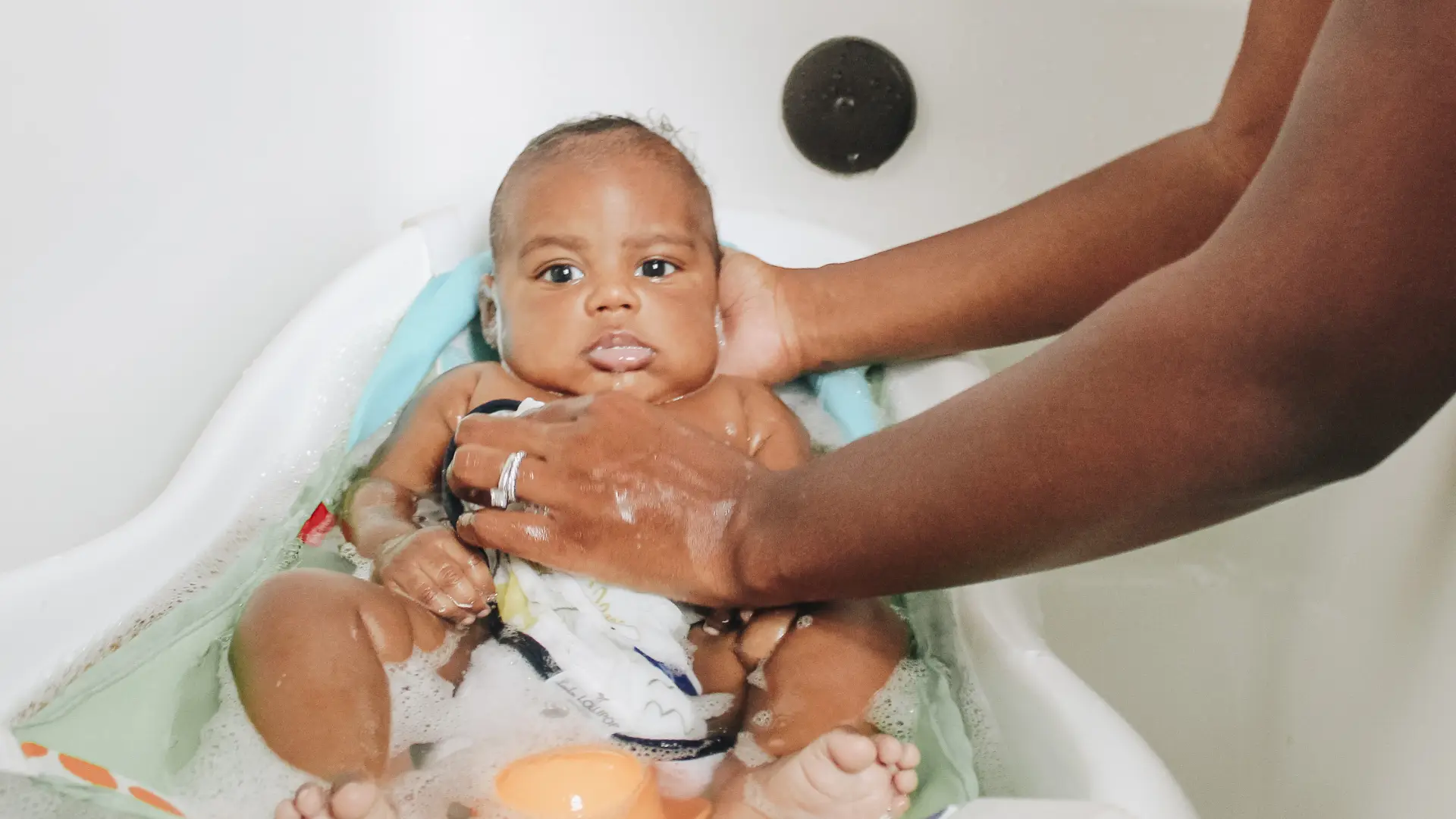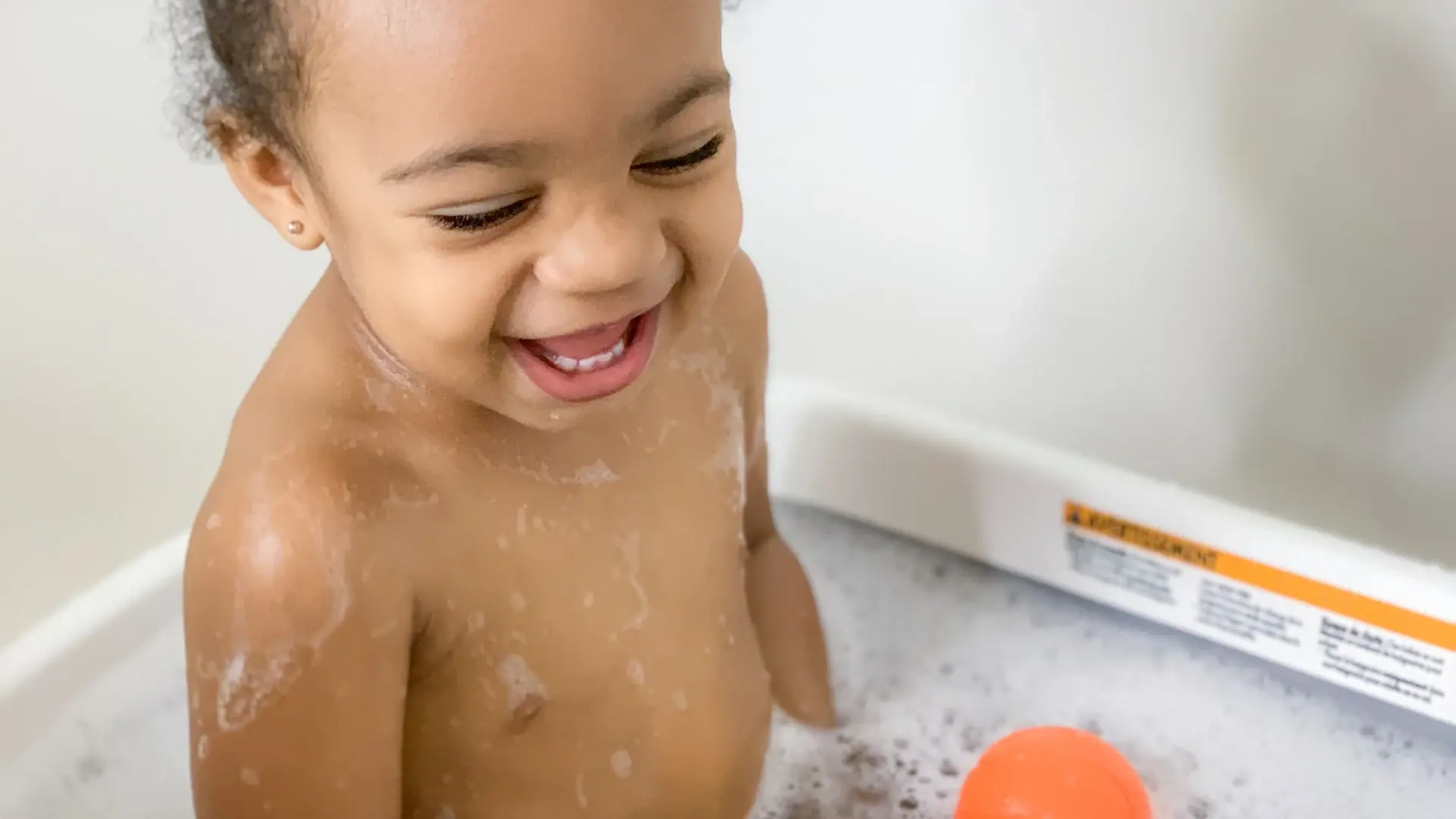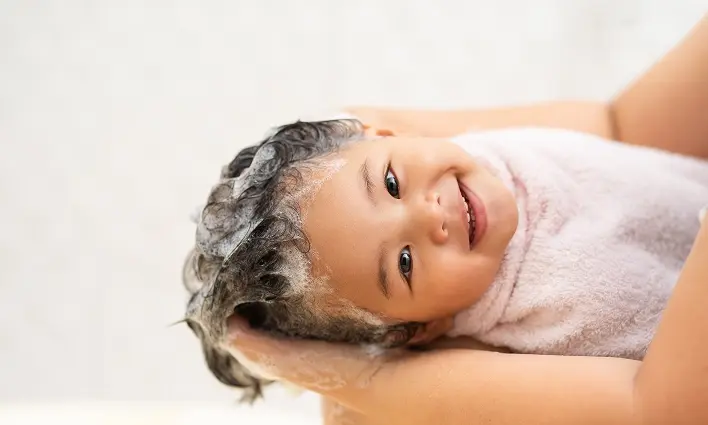Bringing your baby home from the hospital is one of the most exciting days of your life, but it’s not all smiles and cute newborn outfits! Parenthood is full of questions, uncertainty, and worry that you’re doing something wrong. One of the most commonly asked questions from new parents is, “how often should I bathe my baby?”. The exact answer will depend on your baby’s skin, how mobile they are, and if they’re eating solid foods. Newborns typically only need 2 to 3 full baths a week1, while older babies that have started crawling and eating solids may need a bath every day or every other day.
Bath time that’s a positive experience for both you and your child is easier to achieve that than you realize! Start following these baby bath tips as early as possible to set the tone for every bath time in the future.
Have Everything You Need Before You Start Bathing Your Baby
Before you put your baby in the bath, make sure you have everything you’ll need within arm’s reach.2 The key items you’ll need for baby’s bath time include:
The tub with a baby-friendly water temperature
Gentle baby wash
A soft washcloth
A dry, clean towel
Clean diaper
Clean clothes
Hydrating baby lotion
Any specific creams your baby needs (i.e., diaper cream, eczema cream)
Use the Right Bathtub for Your Baby
Using the right tub at bath time is essential to keeping your baby safe and supported. For newborn babies, a contoured bathtub is ideal. The contours of the tub will help keep your baby comfortable and in a safe position while you give them their bath. Until your babies umbilical cord falls off, give sponge baths while they sit in the contoured tub.
Once your baby is around 6 months of age and starts to become more mobile, the regular bathtub in your home is all you’ll need. Keep the water level low2 and never leave your baby unattended in the tub, even if it’s only for a moment.

Set the Bath to the Perfect Temperature
Water that’s too hot or cold will be uncomfortable for your baby. The ideal water temperature for your baby’s bath is 100°F. You can purchase a bath thermometer for extra peace of mind but testing the water temperature on the inside of your wrist is fine too. Always swirl your hand through the water before putting your baby in to avoid hot spots.
Keeping the air in the bathroom warm can help prevent any cold chills or drafts on your baby’s wet skin. Turn the furnace up or use a small space heater to achieve a temperature around 75°F.
Take the Right Steps to Giving Your Baby a Bath
Knowing what steps to follow during bath time will help boost your confidence and take the stress out of bath time. The exact steps to follow during bath time depends on the age of your baby.
Newborns (0 – 3 months)
Start by lathering a small amount of baby wash onto a soft washcloth or your hands. Wash their head and face first, avoiding the eye area. Then move down to wash their arms, legs, and tummy3. Pay close attention to any folds and rolls on your baby to ensure there’s no bacteria hiding in those hard to see areas. Then, rinse your baby to remove any soap residue before getting them out of the tub.
Infants ( 3 months – 1 Year Old)
The steps for bathing an infant are almost the same as the one’s you follow to wash a newborn. By 3 months, your baby is more likely to have hair. If they do, start the bath by washing their hair with a gentle baby shampoo before moving on to wash their face and body. You can start to introduce some bath toys or books around this age to make bath time more fun!
Think Twice About What You Bring to Your Baby’s Bathtub
When you look at all of the baby bath items for sale, it can be hard to distinguish what’s actually good for you and your baby and what’s not. Steer clear of bubble bath solutions until your baby is into toddlerhood. Introducing bubble baths to a newborn or infant can increase the risk of dry skin and UTI’s. Choose gentle baby wash and shampoo that’s free of harsh chemicals that may irritate your baby’s skin.
When you’re choosing bath toys, opt for rubber toys that are completely sealed. Bath toys that have an opening where water can go in are prone to mold growth. It’s nearly impossible to get the inside of a small rubber ducky completely cleaned, so it’s safer to just avoid bath toys with holes all together.
Establish Your Own Routine from Your Newborn’s Very First Bath
Babies thrive on routine! It’s comforting for them to know what to expect from bath and bedtime. Set your own routine starting with the very first bath. While your baby may not pick up on the routine as a newborn, before you know it, they’ll be observing and engaged in the bath routine. Start the bath routine after their last bottle before bed. Your bath time routine may include:
Taking the bath
Drying off, applying lotion, changing to new clothes
Read a book or sing a song
Put on a swaddle
Put the baby in their bed or bassinet
Make Baby Bathing Stress Free, Even When Traveling
Traveling can be very stressful for both the parents and their baby. You can make travel bath time a stress-free experience by coming prepared. Bring along the same items you use at home for bath time. This can include certain toys, towels, soap, tubs, and lotion. Bring a collapsible bathtub if a traditional tub won’t be available. Stick to the same routine you have at home. You might be in a different location, but your baby will find comfort in their bath time routine! Following your routine and including familiar items even when you’re away from home will help your baby have a better night’s sleep – that means you’ll get a better night sleep too!

